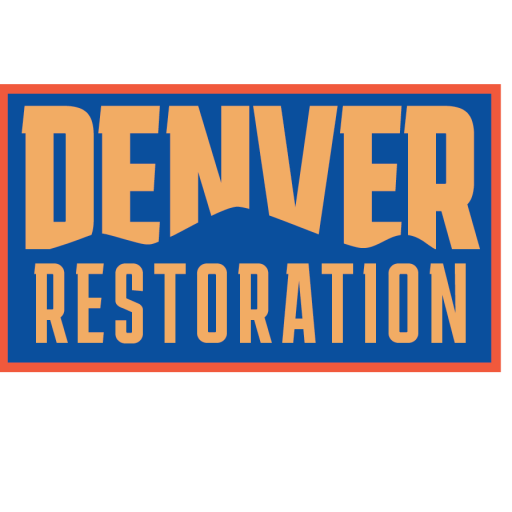A Comprehensive Understanding of Insurance Claims
Whether it’s a residential home or a commercial property, the amount of work required for proper restoration after fire, water, or mold damage can be overwhelming. From accurate damage assessment and estimation to the selection of effective restoration techniques and equipment, dealing with property damage is a complex process. Among these various tasks, navigating the complex web of insurance claims is arguably the most daunting.
The Importance of Fair Insurance Handling
A clear understanding of the insurance claim process is crucial in ensuring a fair outcome. As a property owner, it is important to remember that insurance is designed to offer protection against unexpected damage and financial loss. Therefore, fair insurance handling is not just a matter of courtesy; it’s a legal obligation on the part of insurance companies.
Adopting a Proactive Approach
The first step in a property damage claim is assessing the scale and scope of the damage. This involves accurately documenting all visible and hidden damage. For instance, in the case of water damage, it is not just the visible destruction that counts, but also potential underlying issues like structural damage and mold formation.
Next, an estimate of the cost of restoration is prepared. It’s important to recognize that different restoration projects may require different strategies and equipment. For instance, the tools needed for fire damage cleanup may differ from those required for water damage recovery.
Ensuring Compliance with Insurance Regulations
Each state has specific codes and regulations governing how insurers should handle property damage claims. For example, California’s Fair Claims Settlement Practices Regulations prescribe fair procedures and practices insurers must follow when handling claims.
Customer Communication: Key to Successful Claim Resolution
The path to successful claim resolution lies in effective communication between the parties involved. Every interaction, whether verbal or written, should be clear, concise, and prompt. This ensures that each party understands their obligations and responsibilities.
One of the most crucial pieces of communication is the Statement of Loss. This document outlines the extent of the property damage and the estimated costs of restoration. Preparing an accurate Statement of Loss not only expedites the claim process but also boosts the prospects of fair settlement.
Resolving Disputes: The Role of Third Parties
In complex cases, third-party intervention can be beneficial. From public adjusters to attorneys specializing in property damage claims, these experts can offer much-needed support in navigating the intricate insurance realm. Remember, your aim is not merely getting a claim settled, but ensuring it is settled fairly and in compliance with all legal regulations.
Conclusion
In the end, navigation of insurance claims after property damage boils down to a fair approach. By understanding the dynamics of insurance claims, the importance of fair insurance handling, and the role of clear customer communication, property owners can significantly improve their chances of a successful and fair claim resolution. Remember, the goal isn’t merely to get back to where you were before the damage, but to do so in a way that is fair, transparent, and fully compliant with the law.
In need of expert guidance on the restoration process? Visit our pages on water damage recovery and dealing with asbestos to learn more.
Understanding the Intricacies of Fire Damage Claims
Fire damage can be particularly devastating, leaving homeowners and business operators in uncertainty. Grasping the essential aspects regarding fire damage claim procedure can be instrumental in getting a reasonable settlement.
Inspecting the Damage
After the dust has settled, it’s crucial to document all damage caused by fire, smoke, and the methods used to extinguish the fire. Even minute details should not be overlooked as they could add up to substantial costs. It is often worthwhile to engage the services of professionals who are conversant with fire damage assessments to ensure accuracy and completeness. Visit this page for insights on mastering smoke damage.
Fire Damage Restoration Techniques
Upon documenting the damage, the next step involves identifying appropriate restoration techniques. These may range from smoke removal, deodorization, structural repairs, to complete rebuilds in severe instances. A sound understanding of restoration techniques is vital in justifying the claim’s value to the insurance company. You can learn more about commercial restoration services here.
Filing the Claim
Once the damage has been documented and an estimate for restoration has been established, the next phase involves filing the claim with your insurance provider. You must act promptly to avoid any possible complications or claim denials. Check out this New York Department of Financial Services guideline for an idea of how to file claims under your policy.
Water Damage Claims: A Closer Look
Unlike fire, water damage restoration often presents unique challenges, such as potential structural instability, mold growth, and unseen damage within walls or floors. Understanding the intricacies of water damage claims can significantly improve the chances of a fair insurance resolution.
Detecting Hidden Damage
The sneaky nature of water can cause damage in areas that aren’t immediately visible. Consequently, a detailed inspection is necessary to uncover all water damage, including potential threats like mold growth. Professional help is invaluable in such a situation to ensure comprehensive documentation of all damages.
Water Damage Restoration
The restoration process depends on the severity of the damage. In minor instances, drying and cleaning may suffice. However, in more extreme cases, significant reconstruction may be needed. Ensuring you have a complete understanding of the restoration process and costs involved will strengthen your case when negotiating with insurance adjusters. To learn more about accelerating your water damage cleanup process, visit this page.
Submitting Your Claim
Just as with fire claims, it’s important to submit water damage claims promptly, providing comprehensive documentation of the damage. Familiarity with state regulations on claims, such as those found here for Texas, will be beneficial during this process.
Insurance claims can often turn into a drawn-out process fraught with complex legalities. Knowledge of the legal facets of insurance claims can dramatically help property owners navigate the process.
Legal Compliance
Each state has specific regulations that govern insurance claims. It is crucial to understand these laws, as they dictate the claim handling procedures of insurance companies. For instance, Georgia residents can refer to this document for an overview of the state’s regulations, and likewise, Minnesota residents to this page.
Crisis Management
In times of crisis, such as severe damage due to fire or water, effective management strategies are crucial. Professional aid can be sought to ensure smooth communication with insurance entities and to expedite the claim process.
Property Damage Restoration: A Holistic Approach
Navigating insurance claims after property damage indeed demands a comprehensive approach. An understanding of damage assessment, knowledge of restoration techniques, awareness of legal requirements, and effective communication are all essential elements in the equation. By embracing this holistic approach, property owners can enhance their prospects of achieving a successful and fair claim resolution.
For further assistance in the restoration process, feel free to explore water damage recovery techniques or learn more about handling asbestos here.

